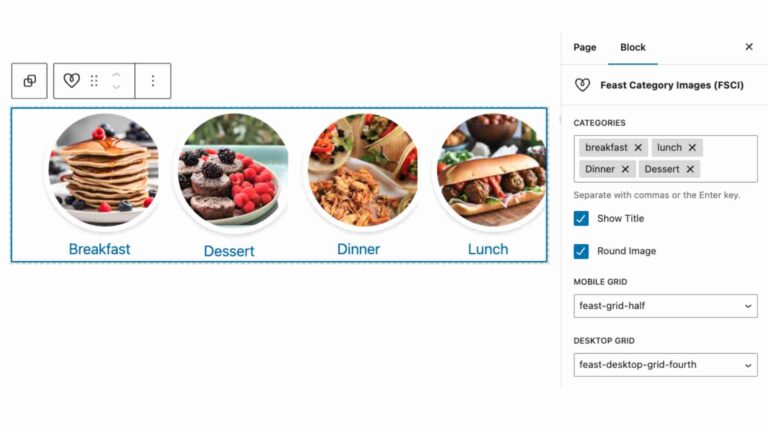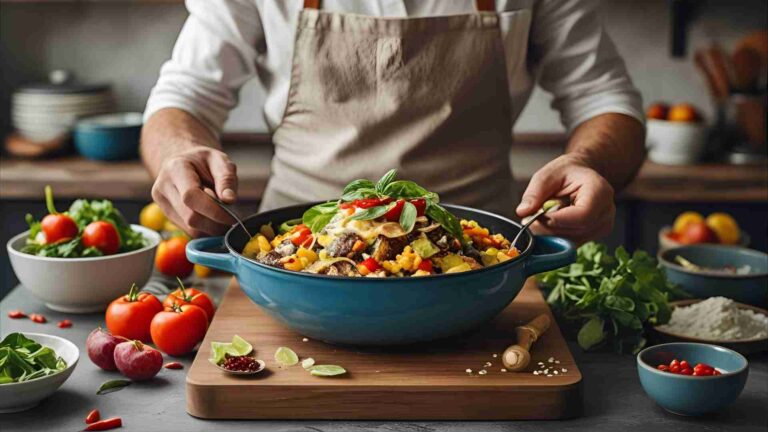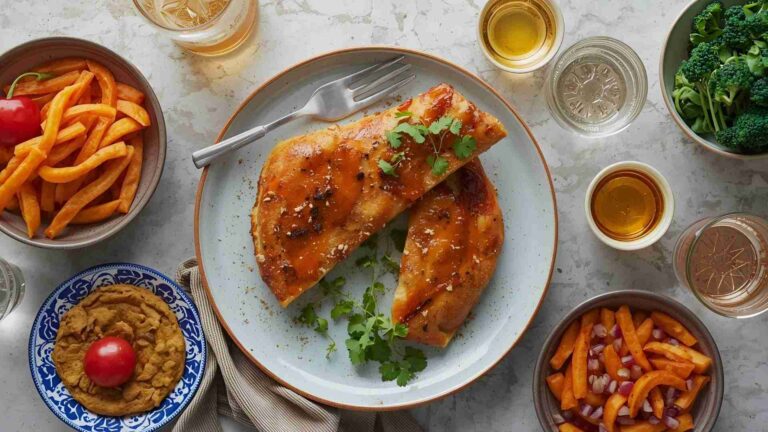How To Hire A Virtual Assistant For Your Food Blog?
Learn how to hire a virtual assistant for your food blog with this step-by-step guide. Delegate tasks, create job descriptions, and build a team to grow your blog efficiently.
Running a food blog is a labor of love, blending culinary creativity with digital marketing, photography, and content creation. As your blog grows, so do the demands on your time. From crafting recipes to managing social media, the workload can quickly become overwhelming. Hiring a virtual assistant (VA) can be a game-changer, allowing you to focus on what you do best—creating mouthwatering content—while delegating time-consuming tasks to a capable team member. This guide provides a detailed, step-by-step approach to hiring a virtual assistant for your food blog, ensuring you find the right fit to help your blog thrive.
Why Hire a Virtual Assistant for Your Food Blog?
Food blogging involves a multitude of tasks beyond recipe creation: photography, social media management, SEO optimization, email marketing, and website maintenance, to name a few. As your audience grows, these responsibilities can sap your energy and creativity, leaving little time for the high-value tasks that drive growth. A virtual assistant can take on repetitive or specialized tasks, freeing you to focus on content creation and strategy.
For example, a food blogger earning $200 a month might spend $50 on a VA to handle tasks like uploading blog posts or creating Pinterest graphics. While this initially seems like a significant expense, the time saved—often hours per week—can be reinvested into creating new recipes or engaging with your audience, leading to increased traffic and revenue. The key is to hire strategically, ensuring the VA’s contributions align with your blog’s goals.
Step 1: Identify Tasks to Delegate
The first step in hiring a VA is determining which tasks to outsource. Start by reflecting on your workflow and identifying areas that drain your time or energy. Ask yourself:
- What tasks do I dislike? For instance, scheduling social media posts or responding to comments might feel tedious.
- What are my weaknesses? If graphic design or SEO isn’t your forte, a VA with those skills could elevate your blog’s quality.
- What’s preventing me from focusing on high-value tasks? If uploading posts to WordPress takes hours, delegating this could free up time for recipe development.
Common tasks food bloggers outsource include:
| Task | Description | Skill Level Required |
|---|---|---|
| Social Media Management | Scheduling posts, writing captions, curating content | Moderate to High |
| Blog Post Uploading | Adding posts to WordPress, inserting images, alt text, and metadata | Basic to Moderate |
| Graphic Design | Creating Pinterest pins, recipe cards, or ebook covers | Basic to Advanced |
| Recipe Testing | Preparing and testing recipes for accuracy | Moderate |
| SEO Optimization | Keyword research, updating old posts | Moderate to Advanced |
| Email Marketing | Drafting newsletters, managing subscriber lists | Moderate |
| Website Maintenance | Fixing technical issues, updating plugins | Advanced |
Once you’ve listed tasks, group them by skill set. For example, social media and graphic design might require one VA, while technical website tasks might need a specialist. This clarity helps you decide whether to hire one VA or multiple part-time assistants.
Step 2: Set Your Budget and Compensation Structure
Budgeting for a VA depends on the tasks and their complexity. Specialized skills like advanced graphic design or SEO expertise command higher rates, while repetitive tasks like scheduling posts can be outsourced at lower costs. Here’s a breakdown of typical VA rates based on skill level and location:
| VA Type | Location | Hourly Rate (USD) | Monthly Full-Time (USD) |
|---|---|---|---|
| General Admin VA | Philippines | $3–$7 | $250–$500 |
| General Admin VA | US/UK | $15–$30 | $1,200–$2,400 |
| Social Media Manager | Philippines | $5–$10 | $400–$800 |
| Social Media Manager | US/UK | $20–$50 | $1,600–$4,000 |
| Graphic Designer (Basic) | Philippines | $5–$15 | $400–$1,200 |
| Graphic Designer (Advanced) | US/UK | $30–$75 | $2,400–$6,000 |
Compensation Models
- Hourly Rate: Ideal for ongoing tasks like social media scheduling. Rates vary widely based on location and expertise.
- Per-Task Rate: Best for one-off projects, such as designing a set of Pinterest pins or categorizing blog archives. For example, a roundup post with graphics might cost $20–$50 on platforms like Fiverr.
- Monthly Retainer: Suitable for full-time or consistent part-time work, especially for VAs in lower-cost regions like the Philippines, where full-time VAs start at $250/month.
To set your budget, consider your blog’s revenue and the potential return on investment. A VA who saves you 10 hours a week could allow you to create two additional recipe posts, potentially increasing traffic and ad revenue. Start small if your budget is tight—$50–$100/month can cover basic tasks like scheduling or data entry.
Step 3: Develop a Robust Onboarding Process
A seamless onboarding process sets the stage for a productive relationship. Before hiring, document the workflows for tasks you plan to delegate. This ensures your VA can hit the ground running and minimizes errors. Use tools like Google Docs for written guides or Loom for video tutorials to explain processes clearly.
For example, if you’re outsourcing blog post uploads, create a guide covering:
- How to log into WordPress
- Image size requirements (e.g., 1200x800px for featured images)
- Adding alt text and metadata
- Inserting Pinterest button code
- Formatting recipes with specific plugins
Here’s a sample workflow for uploading a blog post:

Spending time upfront on detailed guides saves hours during training and ensures consistency. If you need to hire a new VA later, these documents will streamline the process.
Step 4: Craft a Detailed Job Description
A clear job description attracts candidates who align with your needs. Include the following:
- Brand Overview: Briefly describe your food blog’s niche, audience, and tone (e.g., “A vegan recipe blog focused on quick, family-friendly meals”).
- Responsibilities: List specific tasks, such as “Scheduling 20 Instagram posts per week” or “Uploading 4 blog posts monthly to WordPress.”
- Required Skills: Specify tools (e.g., Canva, WordPress) and experience (e.g., “2+ years in food photography”).
- Hours and Availability: Indicate part-time (e.g., 10 hours/week) or full-time, and preferred time zones.
- Compensation: Mention hourly rate, per-task fee, or monthly retainer range.
- Job Status: Clarify whether the VA is a contractor or employee.
Example job description:
Virtual Assistant for Vegan Food Blog
About Us: Plant-Based Bites is a food blog sharing quick, vegan recipes for busy families.
Responsibilities: Schedule 15–20 social media posts weekly (Instagram, Pinterest), upload 4 blog posts monthly to WordPress, create basic Pinterest graphics using Canva.
Skills: Proficient in WordPress, Canva, and Instagram; experience in food blogging preferred.
Hours: 10–15 hours/week, flexible schedule, preferably overlapping with PST.
Compensation: $5–$8/hour or $100–$150/month.
Status: Independent contractor.
Step 5: Find and Recruit Candidates
Finding the right VA involves tapping into multiple channels:
- Networking: Ask fellow food bloggers for recommendations. Communities like Food Blogger Pro or Tastemaker Conference’s Freelance + Jobs page are excellent starting points.
- Online Platforms: Post listings on Upwork, Fiverr, or OnlineJobs.ph. Upwork is ideal for hourly or part-time VAs, while Fiverr suits per-task projects. OnlineJobs.ph specializes in full-time VAs from the Philippines, starting at $250/month (note: $49/month membership fee, cancellable after hiring).
- Social Media Groups: Join Facebook groups like Food Bloggers Virtual Assistants or Rockstar Bloggers to connect with candidates.
- Word of Mouth: Share your job listing with your network, including friends, family, and your blog’s audience via newsletters or social media.
When using platforms like OnlineJobs.ph, you can either post a job listing or proactively search for candidates by filtering for skills like “WordPress” or “Photoshop.” Reach out to promising candidates with a brief message outlining the role and your budget.
Step 6: Interview and Assess Candidates
Interviews help you gauge a candidate’s skills, communication style, and fit with your blog’s culture. Prepare a set of standardized questions to ensure fairness, such as:
- “What experience do you have with food blogging or similar niches?”
- “Are you familiar with [specific tools, e.g., WordPress, Canva]?”
- “How do you handle tight deadlines or technical issues?”
- “Can you share examples of past work (e.g., social media posts, blog uploads)?”
For specialized roles, assign a small test project. For example:
- Social Media VA: Ask them to draft a week’s worth of Instagram captions for a recipe post.
- WordPress VA: Have them upload a sample post with provided content and images.
- Graphic Design VA: Request a Pinterest pin based on a recipe photo.
Always check references to verify reliability and quality. A one-week trial period, as one blogger did with a $250/month VA, can further confirm a candidate’s suitability.
Step 7: Onboard and Manage Your VA
Once hired, onboard your VA with clear instructions and regular communication. Use collaboration tools to streamline workflows:
- Slack: For real-time communication.
- Trello or Asana: For task management and deadlines.
- Google Drive: For sharing documents and guides.
Set clear expectations for deadlines, quality, and communication frequency. For example, schedule weekly check-ins to provide feedback and address issues. Encourage your VA to ask questions and move forward if stuck, rather than stalling on a task.
Be patient, especially with lower-cost VAs who may require more training. If mistakes occur, assume the issue lies in unclear instructions and refine your guides. Pay on time—typically biweekly via PayPal for international VAs—to maintain a positive relationship.
Step 8: Build a Long-Term Relationship
A strong relationship with your VA fosters trust and efficiency. Offer constructive feedback to help them improve, and acknowledge their contributions to boost morale. For example, if your VA creates a standout Pinterest pin that drives traffic, let them know the impact. Respect their working conditions, especially for VAs in regions like the Philippines, where internet reliability may occasionally be an issue due to weather.
Regularly evaluate your VA’s performance and adjust their tasks as your blog evolves. A VA who starts with social media scheduling might later take on newsletter creation or SEO tasks as they gain familiarity with your blog.
Real-World Example: A Blogger’s Success Story
Maggie, a food blogger at Omnivore’s Cookbook, reduced her workload by 50% after hiring a VA from the Philippines for $250/month. She delegated graphic design (creating Pinterest header images) and blog post uploads, which previously took her 15–20 minutes per post. Her VA now handles 50–60 hours of tasks monthly, saving Maggie 20 hours of repetitive work. This allowed her to focus on recipe creation, doubling her content output and boosting traffic.
Maggie’s process involved:
- Writing detailed guides for image creation and post uploads.
- Hiring via OnlineJobs.ph after messaging candidates with Photoshop and WordPress skills.
- Starting with a one-week trial to ensure a good fit.
- Using PayPal for biweekly payments.
Her success highlights the importance of clear instructions, patience during training, and strategic task delegation.
Common Pitfalls and How to Avoid Them
Hiring a VA can come with challenges. Here’s how to address them:
- Unclear Expectations: Provide detailed guides and examples to avoid miscommunication.
- Overestimating VA Skills: Verify experience through test projects and references, especially for specialized tasks like graphic design.
- Micromanaging: Trust your VA to handle tasks after training, but maintain regular check-ins.
- Budget Overruns: Start with small, per-task projects to test affordability before committing to a monthly retainer.
Scaling Your Food Blog with a VA
Hiring a VA is a strategic step toward scaling your food blog. By delegating repetitive or specialized tasks, you can focus on creating high-quality content that attracts readers and monetization opportunities. Whether you spend $20 on a Fiverr gig for a roundup post or $250/month for a full-time VA, the time saved can translate into significant growth.
As you transition from blogger to manager, embrace the mindset shift. Planning workflows, training VAs, and managing tasks may feel daunting at first, but the payoff—more time for creativity and business growth—is worth it. Start small, refine your process, and watch your food blog flourish with the support of a capable virtual assistant.
Please share these How To Hire A Virtual Assistant For Your Food Blog? with your friends and do a comment below about your feedback.
We will meet you on next article.
Until you can read, Why WordPress is the Best Blogging Platform for Food Bloggers




![How To Create a Weight Loss Blog [9 Steps to Success!]](https://yumtonight.com/wp-content/uploads/2025/07/Untitled-design-2-4-768x432.jpg)

